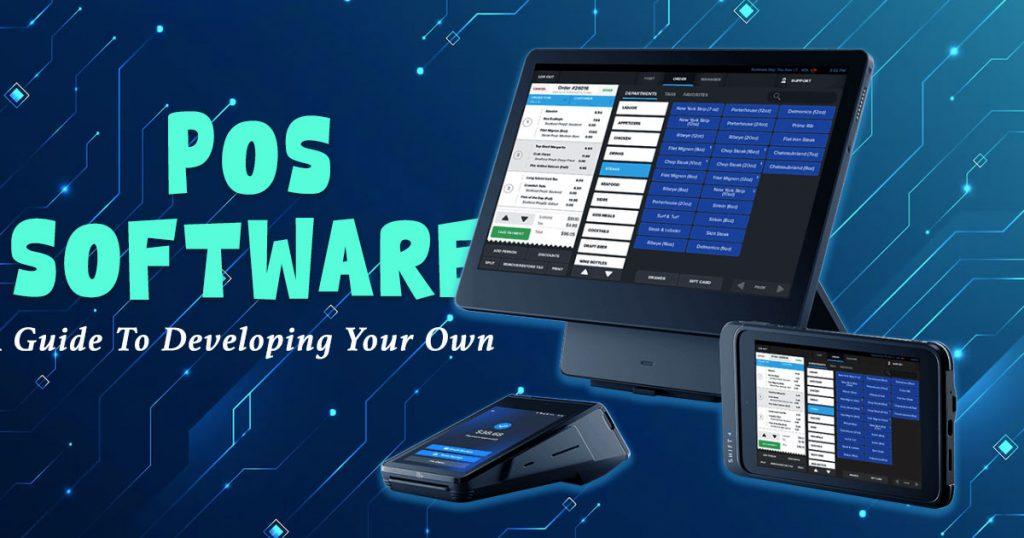What is POS software?
POS software is a digital solution businesses utilize to handle sales transactions. It serves as the central hub where transactions are processed, and it can handle various functions essential for business operations. Typical features of POS software include:
- Sales Processing: Facilitates transactions, including sales, refunds, and exchanges.
- Inventory Management: Monitors inventory levels, updates stock information instantly, and notifies users when supplies are running low.
- Customer Management: Keeps customer details, records their purchase history, and assists in handling loyalty programs.
- Reporting and Analytics: Produce reports on sales patterns, inventory levels, and customer activities to support informed decision-making.
- Employee Management: Manages employee schedules, tracks hours worked, and processes payroll.
Understanding these features is key to knowing what you need when embarking on POS system development.
Is it hard to create your own POS software?
Creating your own POS software can be tough, but it’s doable with the right plan and resources. You’ll need some technical skills like programming, but a basic understanding can help.
A big challenge is making the software easy to use. It should be simple for employees, so designing a user-friendly interface is important. Also, connecting the software with hardware like barcode scanners and printers can be tricky, but it’s essential for smooth operations.
Security is another major concern. POS systems handle sensitive info like payment and customer data, so strong security is a must to protect this data and keep customer trust.
With good planning, these challenges can be managed. Overall, while building a custom POS system takes effort, it’s possible with the right preparation. With dedication, you can create a system that fits your business and improves operations.
What do you need to create your own POS software?
To create your own POS software, you’ll need several important components:
- Requirements Analysis: Start by identifying the specific features your business needs. Think about aspects like inventory management, processing sales, and managing customer data. This will help you determine the essential functionalities your POS system needs to be effective.
- Technology Stack: Choose the programming languages, databases, and frameworks for your POS system. Common choices include Python, JavaScript, SQL databases, and various web development frameworks. Your choice depends on your technical needs and preferences.
- Hardware Integration: Select the hardware components you plan to use, such as barcode scanners, receipt printers, and card readers. Make sure your software integrates seamlessly with these devices to ensure smooth transaction processing.
- User Interface Design: Create an intuitive interface that simplifies transactions for both employees and customers. A well-designed user interface boosts the efficiency and overall user experience of the POS system.
- Payment Processing: Integrate payment gateways to handle multiple payment methods, such as credit cards and digital wallets. Make sure your system follows industry standards to protect sensitive payment data.
- Testing: Test your software thoroughly to find and fix any issues. Check its performance in different scenarios to ensure it meets all your functional requirements and runs smoothly.
How will you get started?
- Define Your Goals: Begin by identifying the essential features and goals for your POS software. Consider your business’s unique needs and how the POS system can meet them effectively.
- Choose a Development Approach: Decide whether to develop the software yourself or work with a software development company. Each option has benefits and challenges, so pick the one that fits your resources and expertise.
- Plan Your Development Process: Create a detailed plan that specifies timelines, milestones, and deliverables. This plan will help you stay organized and track your progress throughout the development process.
- Develop the Software: Start coding based on your technology stack and design plans. Start by developing the essential features, and then gradually incorporate additional functions and enhancements as required.
- Integrate and Test: Connect your POS software with the hardware and payment systems. Perform detailed testing to ensure that the system functions correctly and efficiently before it goes live.
How would you know if your POS software works?
After developing your POS software, it’s crucial to conduct thorough testing to confirm it meets your needs and operates properly. To determine if your POS system is working effectively, follow these steps:
-
User Testing: Get real users to try out the system. Let them use the software in everyday situations to spot any usability issues and gather their feedback. This helps you see how easy the software is to use and if any changes are needed to improve the user experience.
-
Performance Testing: Check how the software performs under different conditions. Test it with lots of transactions and different types to ensure it runs smoothly and efficiently. This testing ensures the system can handle busy times without crashing or slowing down.
-
Security Testing: Ensure your software meets security standards to protect sensitive information. Make sure it encrypts data and follows best practices for managing customer and business info. Security tests are crucial to prevent data breaches and comply with industry regulations.
-
Integration Testing: Test how well the POS software works with hardware like barcode scanners, receipt printers, and card readers, as well as payment gateways. Integration testing ensures all parts of the system work together smoothly, which is vital for efficient operations.
Collect feedback from users during the testing phases and adjust the system according to their input. Ongoing improvements are essential for enhancing the system and ensuring optimal performance. Regular updates and modifications based on practical use will help keep the system efficient and effective.
Start building your own POS system
Creating your own POS system has many advantages, like customization, cost savings, and better control over features. To develop an effective POS system, understand the needed features, follow a structured approach, and complete steps such as setting goals, choosing technology, and testing. Keeping up with new trends will help maintain a modern system. With good planning and execution, building your own POS system can improve your business operations and give you a competitive edge.
